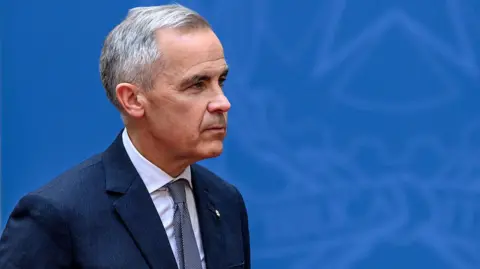The G7 summit this year is hosted in the stunning backdrop of Kananaskis, Alberta, where world leaders from some of the wealthiest countries have convened at a luxury mountain lodge to tackle pressing global issues. Mark Carney, the newly appointed Canadian Prime Minister, arrives at this significant international gathering amid a multitude of global crises ranging from regional conflicts to economic instability. This summit is particularly essential as it allows Canada to showcase its ability to lead on the global stage, especially when addressing three critical priorities of Carney’s administration: enhancing economic strength, reducing reliance on the United States, and establishing Canada’s leadership role amongst G7 nations.
However, as the summit opens, the agenda has undergone a dramatic shift. The escalating tensions surrounding the Israel-Iran conflict threaten to dominate discussions, compelling Canadian officials to adapt their previously established plans. This situation places extra scrutiny on Carney, especially in his interactions with US President Donald Trump, who is known for his unpredictable influence over Canadian sovereignty. Analysts expect this summit to test Carney’s diplomacy and leadership skills in navigating the complex dynamics with Trump.
The implications of President Trump’s approach to international relations are palpable as the summit occurs against the backdrop of a contentious trade war, currently instigated by aggressive US tariffs. These tariffs have generated fierce debates within the G7 over the best course of action to rebalance trade relationships. Concerns regarding global economic growth have been articulated by the World Bank, noting that the past decade has represented one of the slowest growth periods since the 1960s. As the G7 leaders congregate, it is anticipated that discussions will forge a path through these diplomatic complexities, starting with a conversation on the global economy that kicks off the summit.
Acknowledging the volatile backdrop of international relations, attention will further shift to the memory of past G7 meetings, notably the infamous 2018 summit in Charlevoix, Quebec, where President Trump’s early departure and contentious exchanges with leaders culminated in a fractured atmosphere. Carney is acutely aware of the lessons to be gleaned from that event and has been vocal about the necessity for consistency in diplomatic engagement to avoid similar pitfalls.
As discussions progress, Canada’s priorities will center on harnessing technological advancements such as artificial intelligence, enhancing security measures, and addressing critical mineral supply chains. Notably, while climate change dialogue is addressed, broad commitments are not expected, focusing instead on international responses to recent environmental challenges like the raging forest fires threatening parts of North America and Europe. These wildfires have been particularly devastating, marking Canada’s worst wildfire season recently, shocking the nation into a realization of environmental crises and setting a compelling stage for dialogue at the summit.
In addition to domestic issues, international conflicts such as the situation in Ukraine are also prioritized in discussions. Ukrainian President Volodymyr Zelensky is expected to seek support from G7 leaders, emphasizing sanctions against Russia and soliciting further international aid for reconstruction efforts.
Carney’s approach reflects an understanding of the geopolitical complexities inherent in the roles of leaders invited to the summit. He will engage with a diverse array of figures, from leaders representing permanent G7 members to global participants such as Prime Minister Narendra Modi of India, amidst highly strained relations between Canada and India following a controversial assassination on Canadian soil. This invites an expectedly charged atmosphere as discussions evolve. Additionally, with the presence of Mexico’s President Claudia Sheinbaum, bilateral trade discussions loom large, particularly as North American trade policies have felt the throes of previous tariff escalations.
As Carney’s government navigates these treacherous waters, it becomes increasingly crucial for him to balance international expectations, domestic pressures, and the broader implications of diplomatic actions. The outcomes of this summit will likely shape not only Canada’s role within the G7 but also the country’s positioning within global geopolitical frameworks moving forward. All eyes are riveted on the exchange of ideas and potential agreements, as this summit could pave the way for essential solutions that tackle the pressing issues that confront the international community today.



